Winter Slips, Trips, and Falls: A Guide to Safety and Prevention
Slips, trips, and falls are major causes of injuries and hospital visits in the United States, and winter weather makes falls even more common and dangerous. Snow and ice make walking surfaces such as sidewalks, parking lots, and even inside buildings more difficult to navigate, particularly when the slippery spots are imperceivable. The Centers for Disease Control reports that about a million American adults are injured annually from slips and falls, with the injury rate spiking in winter as temperatures plunge.
Understanding how to stay safe and avoid winter slips, trips, and falls is crucial to protect yourself and others from injury. However, you have legal rights and options if you are injured by slipping on someone else’s property because of unremoved ice or snow. When you suffer a slip and fall injury on ice or snow due to another’s negligence, you might be entitled to pursue a claim for compensation from the responsible party.
Common Causes of Slips, Trips, and Falls During Winter
In cold climates such as the Northeast United States and Midwest, severe winter weather can last several months, with heavy accumulation of snow and ice. A Philadelphia Department of Health study showed increased emergency room visits for fall injuries during the winter months. The injury spike was likely due to inclement weather, as hospital visits increased in the days following winter storms.
While many people slip and fall on icy sidewalks and parking lots, these accidents also can happen indoors. As people enter stores, office buildings, and other public spaces, they drag in snow and slush that melts, causing puddles of water in entryways and exits. Depending on the conditions, the puddles can refreeze and create a new hazard. But snow, ice, and slippery surfaces aren’t the only hazards winter brings—the daylight cycle also shortens, reducing visibility outside in the evening.
High-Speed Roads
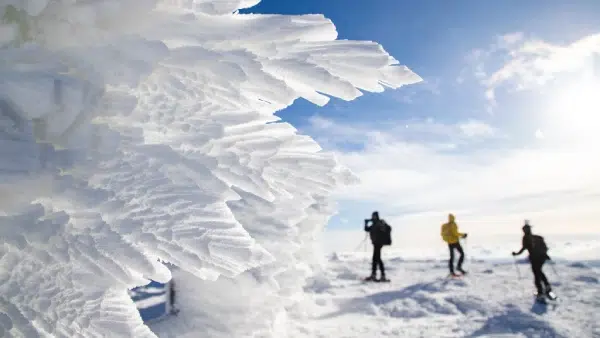
Winter brings cold temperatures and frozen precipitations, and frequent snowstorms create slippery surfaces—both indoors and outdoors. According to a Journal of Safety Research study, 97 percent of all weather-related injuries are slips or trips on ice and snow.
Wet and Slippery Surfaces
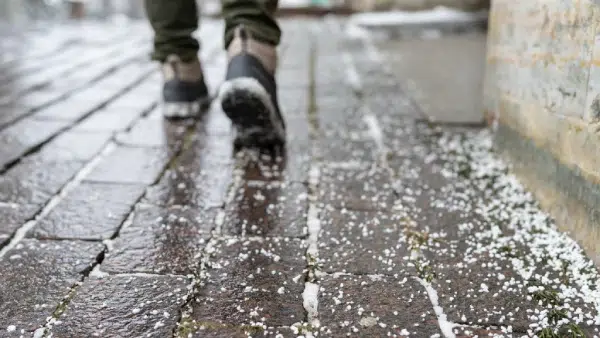
Fog, snow, and freezing rain can also make it difficult to see patches of ice or other obstacles. Black ice is nearly impossible to see and can refreeze overnight, making it extremely difficult to detect and all the more dangerous.
Shorter Days and Early Darkness
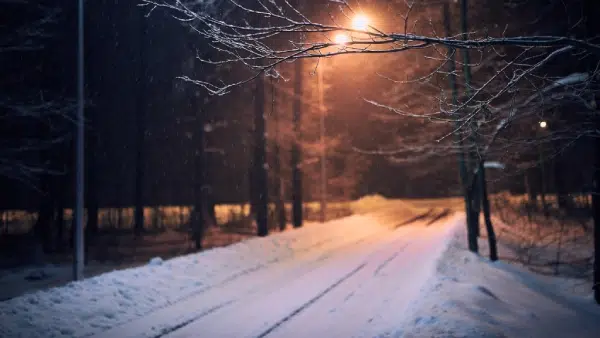
After daylight savings takes effect in the fall, daylight hours become increasingly shorter when winter arrives. It may get darker as early as the afternoon, making it harder for people to see when walking outside. Ice patches that were already difficult to detect may become virtually invisible.
People Most at Risk of Winter Slip, Trip, and Fall Accidents
According to the CDC, more than 800,000 people require hospitalization yearly due to slip and fall injuries, and most recorded brain injuries result from falls. However, not every person is equally likely to be seriously injured by a slip, trip, or fall on snow, ice, or a slippery surface during the winter. Some demographics are at a far higher risk.
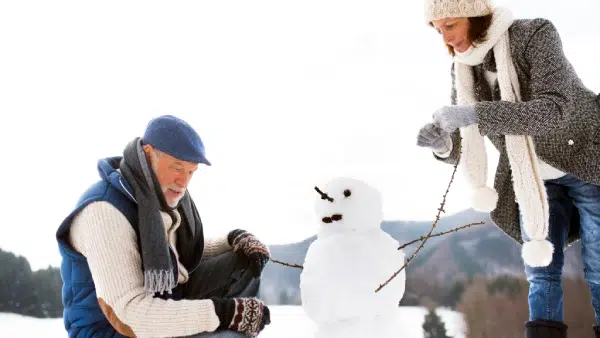
Seniors
Every year, millions of older adults sustain slip-and-fall injuries that require emergency room care. With age, a person’s bones and muscles weaken. Elderly people are more likely to lose their balance, and they may be unable to react as quickly when falling to protect themselves. Due to their bodies’ fragility, they may also sustain more severe injuries. The elderly are more susceptible to fractures from slips and falls than any other demographic.
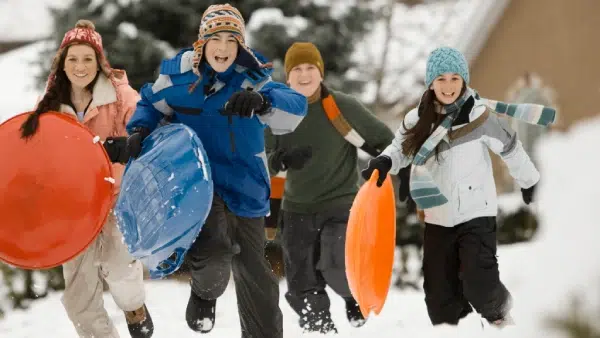
Children and Teens
Young children and even teenagers may run across ice without noticing it, increasing their odds of falling. Among people under 18, wrist injuries are the most common result of slips, trips, and falls.
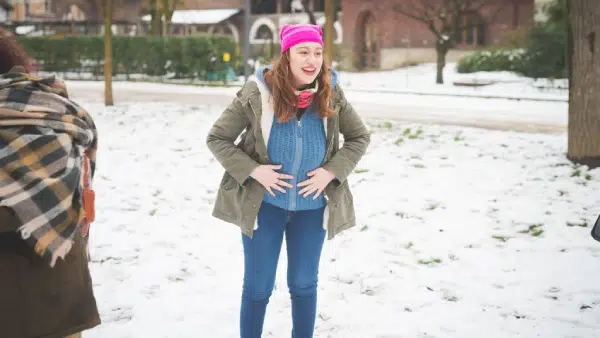
Pregnant Women
Pregnancy changes your center of gravity, balance, and weight distribution, increasing your fall risk. A fetus is generally well protected in the uterus. However, if you fall and hit your belly or fall in your first trimester, see a health care provider immediately to ensure the well-being of your child.
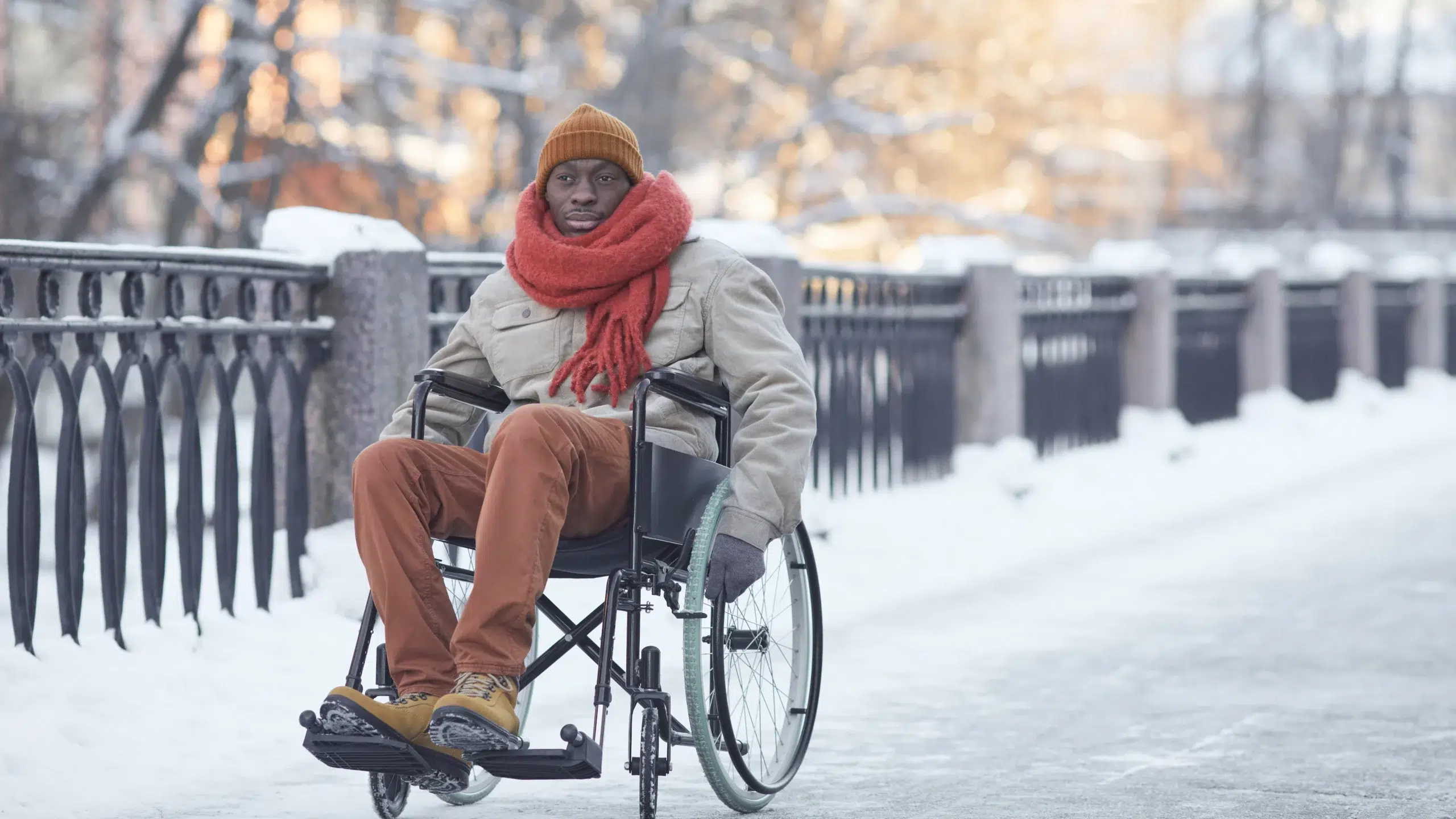
Individuals with Mobility Issues or Disabilities
Individuals with mobility issues or disabilities should utilize assistive devices, including walking aids such as canes, crutches, or walkers with appropriate winter grips to enhance stability. However, slippery surfaces can make it harder to use these aids, and shorter daylight hours can reduce visibility for those with limited sight.
Tips for Staying Safe in Public Spaces During Winter
Although snow and ice may be inevitable during winter, you can take certain steps to minimize your chance of slipping, tripping, or falling. Stay indoors when you can, and use your best judgment when venturing out into the ice and snow. If you must leave home, wear non-skid, rubber-soled, low-heeled shoes that fully support your feet.
If you must walk on ice or slippery snow, experts advise taking your cues from the way penguins shuffle—feet slightly spread, taking small steps, and waddling to stay upright. Keep your hands out of your pockets in case you need to brace yourself for a fall, and keep your center of gravity over your front leg. If you do fall, tuck your chin to prevent landing on your head.
Certain public spaces present a greater threat of slipping and falling than others. Here are some safety tips based on location.
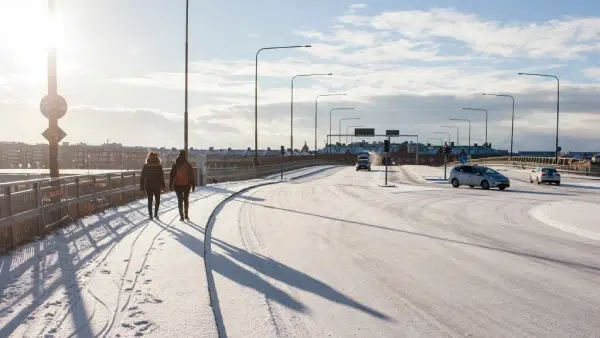
Public Sidewalks and Streets
Be wary of back ice and other slippery surfaces when walking on public sidewalks and streets. Walk slowly and remain aware of your surroundings—don’t walk while distracted by texting or other matters. Be conscious of snow and ice that may fall from overhead, and use handrails when possible.
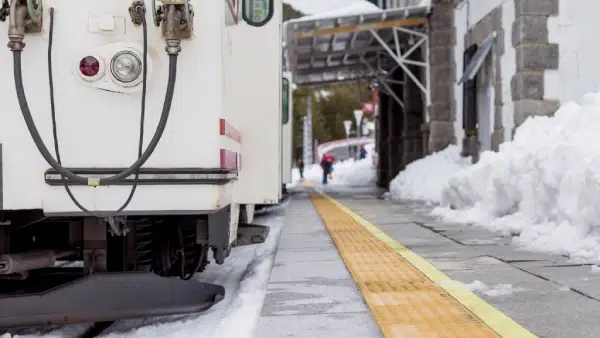
Public Transit
Mind wet surfaces from ice and snow carried into buses or trains on passengers’ shoes. While on public transit, hold handrails or take a seat to avoid slipping when the vehicle moves.
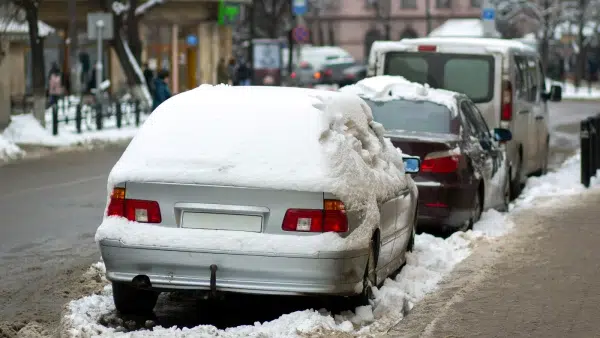
Parking Lots and Driveways
Potholes, divots, and uneven pavement in parking lots can be hidden by snow or ice, increasing the risk of missteps and stumbles. Walk slowly and look carefully for any areas that may pose a greater risk.
Preventing Slips, Trips, or Falls at Your Home or Property During Winter
Failing to properly clear a sidewalk or parking lot can create dangerous ice and snow accumulations, potentially causing severe injuries if someone slips and falls to the ground. This danger can be especially problematic for property owners who can face liability for injuries sustained on their premises, even if the accident was not their fault. Heed local and state regulations on clearing hazards from your property—not all cities have the same rules.
Shovel Snow and Remove Ice
In most states, property owners must remove snow and ice from their premises within 12 to 24 hours of snowfall. If they fail to do so, they can be held liable for injuries resulting from falls.
Winter Proofing Your Property
One of the best ways to prevent snow and ice from accumulating on your property is to use sand, salt, or ice melt to keep stairs and walkways clear. Additionally, you can ensure the security of any adjoining handrails.
Preventing Slips Indoors
Indoor slips during winter can result from people tracking snow and slush inside on their shoes. To prevent this danger, use welcome mats to dry off shoes and encourage visitors to remove their shoes when entering your home.
Staying Safe from Slip, Trips, and Falls at Work or School
Workplace slips, trips, and falls are among the most common winter injuries. Workers tracking snow and ice into the workplace can create puddles and unmarked wet floors. The same can occur in schools—so many children enter the building simultaneously that it’s difficult to ensure the floors are dry enough for walking. Below are some practical ways to prevent slips at workplaces and schools during the winter.
Workplace Safety Tips
- Report any unsafe work conditions to the company.
- Immediately clean up spills or snow that has been tracked inside.
- Install warning signs for wet floor areas and entrances.
- Wear shoes with good treads and support; slip-resistant soles may help.
- Remove tripping hazards in walkways, doorways, and stairs.
- Use handrails when using stairs.
- Ensure adequate lighting is in place, both inside and outside the building.
- Use special care when entering or exiting vehicles.
School Slip and Fall Safety
- Inform your children of the safest paths to take to school if they walk.
- Report any unsafe conditions to the school.
- Remind students not to rush when catching the bus, especially if roads and walkways are slippery.
- Ensure that the bus steps are free of snow and ice.
Promote the use of slip-resistant footwear in the winter. - Inform your children about the risks of walking on or around snow and ice.
Extra Fall Safety Precautions for Seniors and Families During Winter
Additional protective measures may be necessary for seniors and young children to ensure everyone’s safety.
Safety Tips for Seniors
In icy weather, seniors should try to stay inside when possible, but if they must go out, mobility aids such as walkers and canes can add extra stability. Traveling with other people rather than alone also can help.
Safety Tips for Families with Young Children
If you have young children, hold them at all times when walking on icy surfaces. If your child is playing in the snow, make sure they’re wearing high-tread shoes and snow gear, and stay nearby in case of a fall.
What Should You Do if You Fall?
If you feel yourself falling, don’t try to catch yourself with your arms—take the hit on your buttocks or back. After falling, wait for someone to help you up, if possible, so you don’t fall again. After the fall, it’s time to evaluate your injuries and your options.
Get Medical Attention
After a fall on snow or ice, get medical attention immediately to assess potential fractures or other injuries, even if you aren’t in much pain. Some injuries may not be immediately visible; it’s still a good idea to get checked out after a hard fall, just in case.
Report the Fall to Property Owners, Managers or Authorities
If you fall on public property, report the issue to your municipality or the responsible government entity so they can address any dangerous conditions in the area. If you fall in the parking lot of a store or business area, you should speak with the property owner or manager of the business about removing hazards. You may need to report the issue to the authorities if you believe the property manager negligently failed to remove snow and ice in a reasonable time.
Common Injuries in Slip, Trip, and Fall Accidents
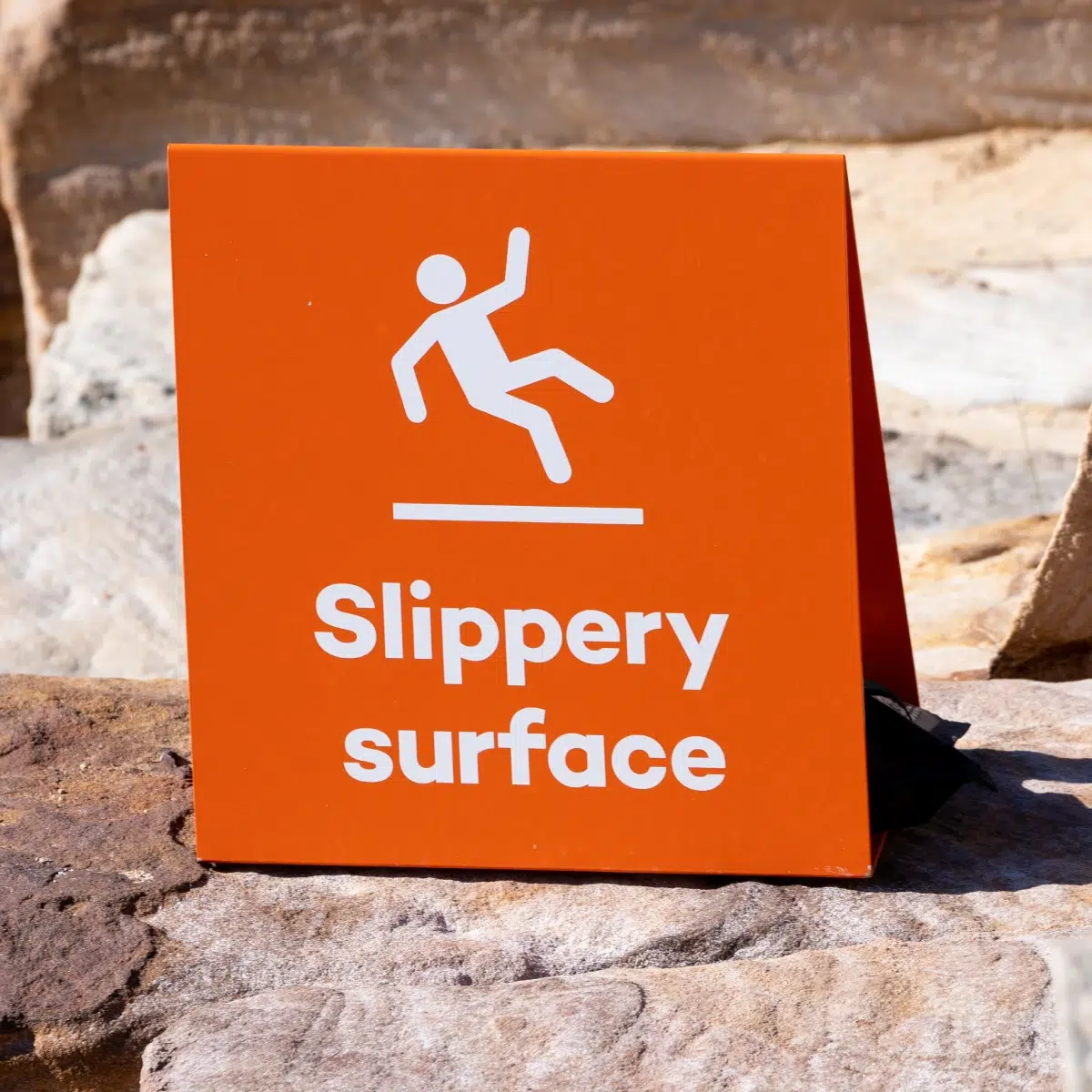
According to the National Safety Council, the second-leading cause of unintentional injury-related death in the United States is falls. However, the most frequent injuries caused by slips, trips, and falls are minor injuries to the wrists, ankles, and knees.
Other common injuries include the following:
- Traumatic brain injuries
- Back and spinal injuries
- Broken bones
- Sprains and strains
- Bruises
- Concussions
- Neck injuries
- Cuts
- Shoulder injuries
Conclusion
During the winter months, it’s critical to remain aware of your surroundings to prevent slips, trips, falls, and injuries. It’s also important to ensure your own property is safe for people to walk on.
Remember that if you are injured by a fall, you may be able to receive compensation for medical expenses, lost income, personal property losses, pain and suffering, mental and emotional distress, loss of enjoyment of life, and loss of family relationships. While you focus on your physical and emotional recovery, let a dedicated fall slip and fall lawyer the complicated and stressful filings, negotiations, and resolution of your injury claim.
